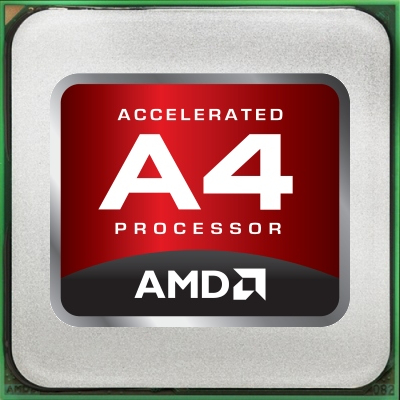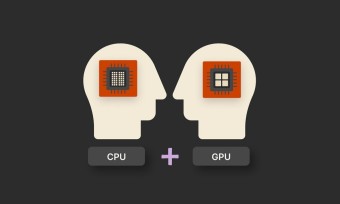Top 5 AMD processors under $150
We independently test the products and technologies that we recommend.

In this table, you can compare the models from the review. You can choose the model yourself in the processor catalog.
We also recommend reading the articles:
- "AMD Ryzen AM4 platform: processors and motherboards"
- "Intel Kaby Lake processors: from Celeron to Core i7"
- "Intel LGA2011-v3 platform: processors and motherboards".

AMD A4-4020 is the cheapest processor on the market that has integrated graphics (that is, does not need a discrete graphics card) and is compatible with the current socket of motherboards (FM2). Occasionally, a lower-frequency A4-4000 (3 GHz) is still on the market, but the price difference from the 4020 (3.2 GHz) is minimal.
The dual-core A4-4020 is a representative of the Richland family (the third generation of AMD chips with an integrated graphics card) and combines the Piledriver processor architecture and GCN graphics. The integrated Radeon HD 7480D graphics, in addition to the 128 microkernels that are used in games, has an additional media encoder for smooth playback of H264 video with a resolution up to 4K.
Due to the presence of a box cooler in the kit, AMD A4-4020 is a self-sufficient basis for the assembly of an office computer. There is plenty of productivity for web surfing and electronic document management. During the lunch break, you can have fun in WoT, LoL and other games until 2010. But the FM2 platform is not the best fit for the role of a compact home theater due to the lack of Mini-ITX format motherboards (see the article "TOP 5 compact motherboards Mini-ITX and Mini-STX").

After the shortage and rise in price of the Pentium G4560, AMD Athlon X4 860K became the cheapest quad core again. Its direct competitor in price is the dual-core Celeron G3920. But for modern applications, including games, the number of cores is more important than high performance per core.
The Athlon X4 860K is built on the Kaveri architecture (10 percent more performant than the previous Piledriver), exactly the same as the older AMD A8 and A10 chips. That's just unlike them, the 860K lacks integrated graphics. However, if you are going to buy a discrete graphics card anyway, then this is even a plus. The lack of graphics and, as a result, less heating allows you to overclock the processor to a higher frequency — 4.3 – 4.4 GHz, depending on the success of a particular instance.
We can advise AMD Athlon X4 860K exclusively for assembling an initial gaming PC worth $400 – 500. The perfect pair for him will be a graphics cardRadeon RX550, GeForce GT 1030 or GTX 1050. However, this processor will most likely not pull more performant graphics accelerators due to low performance on the core.

The processor part of AMD A10-7850K exactly repeats the Athlon X4 860K: an old Kaveri architecture with a base frequency of 3.7 GHz and Turbo Core auto-acceleration up to 4 GHz (only for half of the cores). But at the same time, he also has the graphics part of the Radeon R7, and not just any, but the most powerful among desktop processors (the even more powerful Intel Iris Plus is used only in laptops).
The built-in graphics A10-7850K has not a lot, not a little, 512 microkernels. In the case of dual-channel RAM, its performance reaches the level of discrete GeForce GT 740 and Radeon R7 250 graphics cards, which cost $70. The cost of integration, if we compare the price of the A10-7850K with the Athlon X4 860K without graphics, is only $30.
AMD A10-7850K handles with both multiplayer games (World of Tanks, Dota 2, Counter-Strike: Global Offensive) and single hits (GTA V, Fallout 4, Skyrim). Difficulties can arise only with the newest and most resource-intensive games like The Witcher 3 and PlayerUnknown's Battleground. If you are a fan of one particular or several not particularly demanding games, and you don't care about new items, feel free to buy A10-7850K. After all, in the future you will always be able to buy a discrete graphics card (see the article "Which brand? We buy a graphics card from the best manufacturer").

First, AMD released flagship six- and twelve-threaded Ryzen 7 processors, then mid-price eight- and twelve-threaded Ryzen 5 and only at the very end low-cost quad-core Ryzen 3 without support for SMT technology (that is, the number of cores is equal to the number of threads). The younger Ryzen 3 model became 1200 at a cost of $110, that is cheaper than the four-threaded Core i3 ($120), not to mention the quad-core Core i5 ($180). The performance of four physical cores is approximately equal to six virtual threads.
The Ryzen 3 1200 is based on the 14-nanometer Zen architecture (for comparison, AM3+ processors were 32 nm, and FM2+ — 28 nanometer). A more thorough technical process made it possible to fit one and a half times more computing power within the framework of the previous 65W heat package. It's just a pity that by default Ryzen 3 1200 operates at a relatively low frequency of 3.1 – 3.4 GHz.
Of course, the unlocked multiplier allows you to resort to overclocking (up to 3.9 – 4 GHz). But this will require a more expensive motherboard: on a B350 or X370 chipset, while the low-cost A320 lacks overclocking functionality. In order not to waste time overclocking, you can immediately buy a slightly higher-frequency version of the Ryzen 3 1300X. Ryzen 3 chips, like other Zen chips that have already been released, do not have integrated graphics (models with graphics will appear only in 2018), so it's worth buying as the basis of a gaming PC with a discrete graphics card with a total low-cost of $ 600 – 700.

AMD FX-8350 is a pre—top model in the FX-8000 processor line. Inferior to the top-end FX-8370 solution is only 100 MHz of frequency, and even then only in Turbo Core auto-acceleration mode, but it is significantly cheaper. Moreover, the difference in frequency is easy to catch up and even overtake by manual overclocking thanks to the unlocked multiplier.
The main trump card of the FX-8350 is eight cores at the price for which Intel offers only four threads. But it is worth noting that the FX-8350 cores are also not completely separate, but paired in two: with a common cache and an FPU module (floating-point calculations), which is why the performance of each core is relatively low.
However, the latest games, such as Assassin's Creed Syndicate, Rise of the Tomb Raider and Battlefield 1, give out much higher FPS on a weak eight-core than on a powerful quad-core. And professional applications (photo, audio and video editors) get an even greater increase in performance from parallelization. Perhaps the only serious drawback of the AMD FX-8350 is the strong heating (125 W), which makes it urgent to change a simple box cooler to a tower or "dropsy" (see the article"Air, water and copper pipes: the 5 best CPU coolers of 2017").
We understand the designations on board optics compatible with Micro 4/3 format cameras.
More features than set-top boxes, smaller size than classic desktop PCs.
Hot water always: six best electric water heaters with a volume of 80 liters.
We choose a stroller for two children: wide or long, books or canes, lightweight or more reliable.
Five tablets for home use and content consumption on the go.
Articles, reviews, useful tips
All materials















